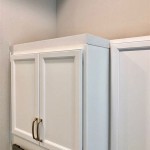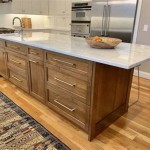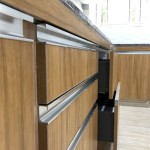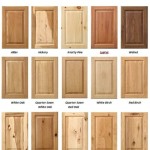Replacement Kitchen Cabinets For Mobile Homes: A Comprehensive Guide
Mobile homes, also known as manufactured homes, offer an affordable housing option for many individuals and families. However, like any home, mobile homes require maintenance and occasional upgrades. Kitchen cabinets, a central feature of any kitchen, are often a prime candidate for replacement. This article provides a comprehensive guide to replacing kitchen cabinets in a mobile home, addressing unique considerations and outlining the process for a successful renovation.
Replacing kitchen cabinets can significantly enhance the aesthetics, functionality, and value of a mobile home. Over time, original cabinets may become worn, damaged, or simply outdated. New cabinets can improve storage space, create a more organized kitchen, and modernize the overall look and feel of the home.
Before embarking on a cabinet replacement project, it's crucial to understand the specific challenges and opportunities presented by mobile home construction. Mobile homes often have unique dimensions and construction methods that differ from traditional site-built homes. Careful planning and consideration are essential for a smooth and successful installation.
Understanding the Unique Dimensions and Construction of Mobile Home Kitchens
Mobile homes are built in factories and transported to their final location. This manufacturing process often results in specific dimensions and construction techniques that influence cabinet choices. Unlike traditional homes, mobile home walls may not be perfectly square or plumb, and floor levels can vary slightly. These irregularities must be taken into account when selecting and installing new cabinets.
One key difference is the wall thickness. Mobile home walls are often thinner than those of site-built homes. This may impact the type of mounting hardware that can be used to secure cabinets to the walls. It's essential to choose appropriate screws and anchors that provide sufficient support without compromising the integrity of the wall structure.
Another important consideration is the floor plan. Mobile home kitchens are often smaller and more compact than traditional kitchens. This necessitates careful space planning and selection of cabinet sizes that maximize storage efficiency without overwhelming the room. The layout might also require custom cabinet solutions to fit unusual angles or tight spaces.
Finally, mobile home kitchens may have specific plumbing and electrical configurations that need to be addressed during the cabinet replacement process. It's crucial to identify the location of pipes and wiring and plan for any necessary modifications or relocations before installing the new cabinets. Hiring a qualified plumber or electrician may be necessary to ensure that these tasks are completed safely and correctly.
Understanding these unique characteristics of mobile home kitchens is crucial for making informed decisions about cabinet selection, installation methods, and potential challenges. Failing to account for these factors can lead to costly mistakes and delays.
Choosing the Right Cabinets for Your Mobile Home
Selecting the appropriate cabinets is a critical step in the replacement process. Several factors should be considered, including style, material, size, and budget. The goal is to choose cabinets that complement the overall design of the mobile home, provide ample storage, and fit within the available space and budget constraints.
Style:
Cabinet styles range from traditional to contemporary, with various options in between. Shaker-style cabinets, with their clean lines and simple design, are a popular choice for mobile homes due to their versatility and timeless appeal. Other options include raised-panel cabinets for a more traditional look, or flat-panel cabinets for a modern aesthetic. The chosen style should complement the existing décor of the mobile home and reflect the homeowner's personal taste.Material:
The material used to construct the cabinets significantly impacts their durability, appearance, and cost. Common cabinet materials include solid wood, plywood, particleboard, and MDF (medium-density fiberboard). Solid wood is the most expensive option but offers superior durability and beauty. Plywood is a good compromise between cost and durability, while particleboard and MDF are more affordable options that are often used for cabinet boxes. The choice of material should be based on budget considerations and desired level of durability.Size:
Accurate measurements are essential for selecting the correct cabinet sizes. Carefully measure the width, height, and depth of the existing cabinets and compare them to the dimensions of the new cabinets. Pay attention to any obstructions, such as pipes or wiring, that may affect cabinet placement. It may be necessary to choose smaller or custom-sized cabinets to fit the available space.Budget:
Cabinet prices can vary significantly depending on the style, material, and size. It's important to establish a budget before beginning the selection process and stick to it. Consider the cost of not only the cabinets themselves but also any necessary hardware, installation materials, and professional labor. Obtaining multiple quotes from different cabinet suppliers and installers can help ensure that you are getting the best possible price.In addition to these factors, it's also important to consider the weight of the cabinets. Mobile home floors may not be able to support the weight of heavy, solid wood cabinets. Lighter materials, such as plywood or MDF, are often a better choice for mobile home kitchens. Consult with a professional installer to determine the appropriate weight capacity for your mobile home floor.
Step-by-Step Guide to Installing Replacement Kitchen Cabinets
Installing replacement kitchen cabinets is a multi-step process that requires careful planning and execution. While some homeowners may choose to hire a professional installer, others may opt to tackle the project themselves. The following is a step-by-step guide to installing replacement kitchen cabinets in a mobile home.
Step 1: Preparation:
Before starting the installation, gather all necessary tools and materials. These may include a level, stud finder, drill, screwdriver, measuring tape, shims, safety glasses, and construction adhesive. Protect the surrounding floor and walls with drop cloths and plastic sheeting. Turn off the water supply to the kitchen sink and disconnect any electrical wiring to appliances.Step 2: Removal of Existing Cabinets:
Carefully remove the existing cabinets, starting with the upper cabinets. Use a screwdriver or drill to detach the cabinets from the wall studs. Be careful to avoid damaging the walls or any underlying plumbing or electrical wiring. Once the upper cabinets are removed, proceed to remove the lower cabinets. Disconnect the plumbing to the sink before removing the lower cabinets. Properly dispose of the old cabinets according to local regulations.Step 3: Wall Preparation:
Inspect the walls for any damage, such as cracks or holes. Repair any damage before proceeding with the installation. Use a stud finder to locate the wall studs and mark their locations. Ensure that the walls are level and plumb. If necessary, use shims to correct any imperfections.Step 4: Installation of Upper Cabinets:
Begin the installation with the upper cabinets. Measure and mark the location for the first cabinet. Use a level to ensure that the cabinet is perfectly level. Attach the cabinet to the wall studs using screws or anchors. Repeat this process for each of the upper cabinets, ensuring that they are aligned and level with each other. Use shims to fill any gaps between the cabinets and the wall.Step 5: Installation of Lower Cabinets:
Install the lower cabinets in a similar manner to the upper cabinets. Measure and mark the location for the first cabinet. Use a level to ensure that the cabinet is level. Attach the cabinet to the wall studs and floor using screws or anchors. Repeat this process for each of the lower cabinets, ensuring that they are aligned and level with each other. Use shims to fill any gaps between the cabinets and the floor.Step 6: Installation of Countertops:
Once the cabinets are installed, proceed with the installation of the countertops. Measure and cut the countertops to the appropriate size. Apply construction adhesive to the top of the cabinets and carefully place the countertops on top. Secure the countertops to the cabinets using screws or clips. Seal the seams between the countertops and the backsplash with caulk.Step 7: Installation of Hardware:
Install the cabinet hardware, such as knobs, pulls, and hinges. Choose hardware that complements the style of the cabinets and provides easy access to the cabinet contents.Step 8: Plumbing and Electrical Connections:
Reconnect the plumbing to the sink and faucet. Ensure that there are no leaks. Reconnect any electrical wiring to appliances, following all safety precautions. Test all appliances to ensure that they are working properly.Step 9: Finishing Touches:
Clean up any debris and remove the protective coverings. Inspect the cabinets for any imperfections and make any necessary adjustments. Caulk any remaining gaps between the cabinets and the walls. Install any trim or molding to complete the installation.Following these steps carefully can help ensure a successful cabinet replacement project. However, if you are not comfortable performing any of these tasks yourself, it's best to hire a professional installer.
Replacing kitchen cabinets is a significant investment that can greatly improve the value and enjoyment of a mobile home. By understanding the unique considerations of mobile home construction, choosing the right cabinets, and following a step-by-step installation guide, homeowners can achieve a beautiful and functional kitchen that meets their needs and preferences.

Mobile Home Supplies For Manufactured Homes And Rvs Wilson S Supply

Mobile Home Kitchen Cabinets The Do S And Don Ts Mhvillager

Double Wide Mobile Home Kitchen Cabinets Rocky Hedge Farm

7 Affordable Ideas To Update Mobile Home Kitchen Cabinets Mhl

How To Update Mobile Home Cabinets Mhl

Double Wide Mobile Home Kitchen Cabinets Rocky Hedge Farm

Double Wide Mobile Home Kitchen Cabinets Rocky Hedge Farm

Double Wide Mobile Home Kitchen Cabinets Rocky Hedge Farm

Tips For Updating Your Mobile Home Kitchen Cabinets Nation

7 Affordable Ideas To Update Mobile Home Kitchen Cabinets Mhl
Related Posts








